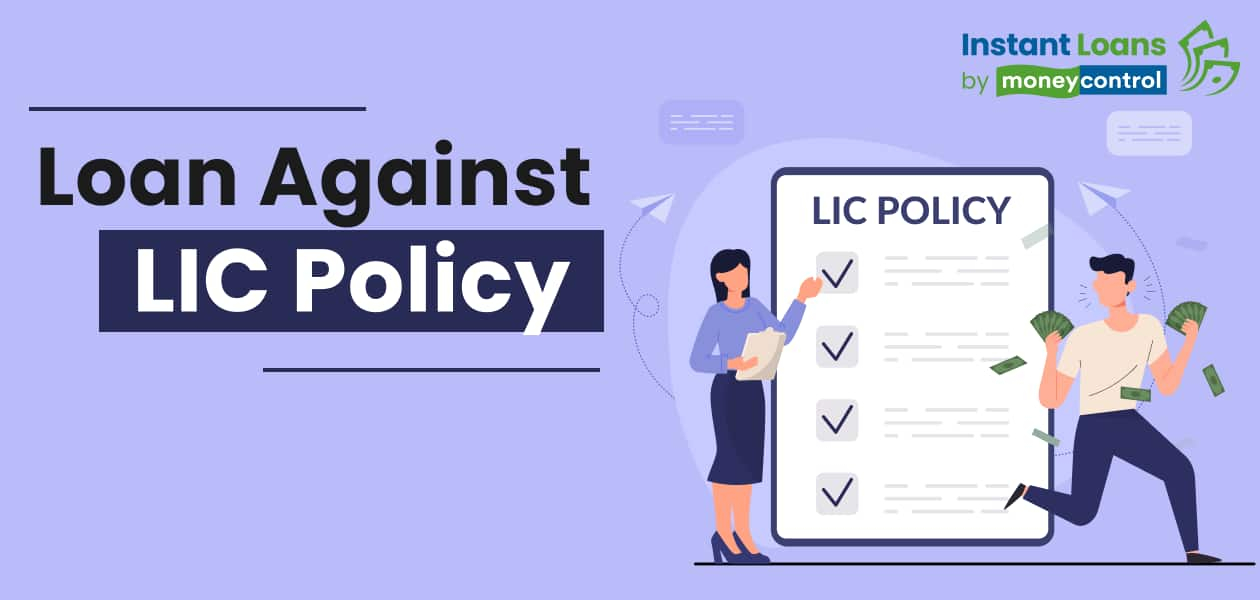25 March, 2025 | 11:00 IST

Need quick cash without selling your assets or dealing with endless paperwork? A loan against your LIC policy might be the perfect solution. Since your insurance policy acts as collateral, you can get funds easily. The LIC policy needs to have a surrender value and you can avail the loan without losing the insurance benefits.
Here are the details about the eligibility criteria, loan amount, interest rates, and repayment options.
Table of Contents
The Life Insurance Corporation of India (LIC) permits its policyholders to obtain loans directly from the company against specific insurance plans. LIC will hold the insurance as collateral until the debt is repaid. Endowment plans, whole-life plans, money-back plans and pension plans are among the schemes that policyholders can pledge to secure a loan.
This is a secured loan; therefore, there is no need for additional security and the approval procedure is quicker. LIC may reclaim the amount from the policy's maturity benefit or death benefit (if the policyholder passes away) if the borrower fails to repay the loan.
Moneycontrol has partnered up with eight lenders to offer fast, fully digital loans up to Rs 50 lakhs. The application process is easy to follow: enter your details, complete the KYC verification, and choose an EMI plan. Interest rates start at as low as 10.5% per annum.
A Step-by-step guide for online process
A Step-by-step guide for offline process
Amount you can borrow
The surrender value of your LIC insurance impacts the loan amount you are eligible for. A number of variables, including the policy duration, accumulated bonuses and surrender value at the time of loan application, will determine the overall loan amount.
LIC typically provides up to 90 percent of the surrender value for active policies. Loan amounts for paid-up policies (those in which premium payments have been stopped) are limited to 85% of the surrender value.
Some examples of eligible policies are LIC Bima Jyoti, LIC Bima Ratna, LIC Dhan Sanchay, LIC Jeevan Azad, LIC New Endowment Plan and LIC New Jeevan Anand.
1. Surrender value
The policy must have a surrender value to qualify for a loan. Only traditional LIC policies like endowment, whole life, or money-back plans are eligible whereas term insurance and ULIPs (Unit-Linked Insurance Plans) are not eligible because they do not have a surrender value.
2. Active policy
The most important thing for taking a loan against a LIC policy is that it must be active, which means all premium payments should be up to date and the policy should not have lapsed. If your policy has lapsed, you must first revive it by paying the overdue premiums and any applicable penalties before applying for a loan.
3. Minimum duration
The policy must have been in force for at least 3 years and acquired a surrender value, as LIC only grants loans on policies that have built a cash value over time.
4. Policyholder
The loan is provided only to the person whose name appears on the policy. Nominees or beneficiaries cannot apply for the loan.
5. Age
The person applying for the loan must be at least 18 years old.
Moneycontrol has partnered with eight lenders to provide you with quick, 100% digital loans up to Rs 50 lakhs. You can get the loan in three steps: enter your information, complete the KYC process and set up an EMI term. Depending on your work status, interest rates can start as low as 10.5% per annum.
When you take a loan against your LIC policy, you need to pay interest on the borrowed amount. LIC provides competitive interest rates, often between 9% and 11% annually, though these can change according to the company's prevailing policies.
The interest is calculated on a semi-annual (six-month) basis, requiring you to pay it every six months. If you fail to pay the interest, LIC may deduct it from your insurance benefits, and if the entire loan amount (including unpaid interest) exceeds the surrender value, LIC may cancel your policy.
Since the loan is secured by your policy, the interest rate is typically lower than that of personal loans.
Loan repayment under your LIC policy is simple and flexible. In contrast to home or personal loans, LIC does not have a set EMI schedule. There is no fixed repayment period as long as the loan amount does not exceed the surrender value.
You can choose to repay the loan in full before maturity by making a lump sum payment, or you can opt for regular EMI payments, which help reduce both the principal loan amount and interest. If you fail to repay the loan, LIC will deduct the outstanding balance, plus accrued interest, from your policy's maturity or death benefit claims.
Share it in your circle
Table of Contents
Explore Top Lenders for Instant Loan upto
Get Instant Loan up to ₹50 Lakhs with Zero Paperwork from Top Lenders
 100% Digital
100% Digital Quick Disbursal
Quick Disbursal Low Interest Rates
Low Interest Rates